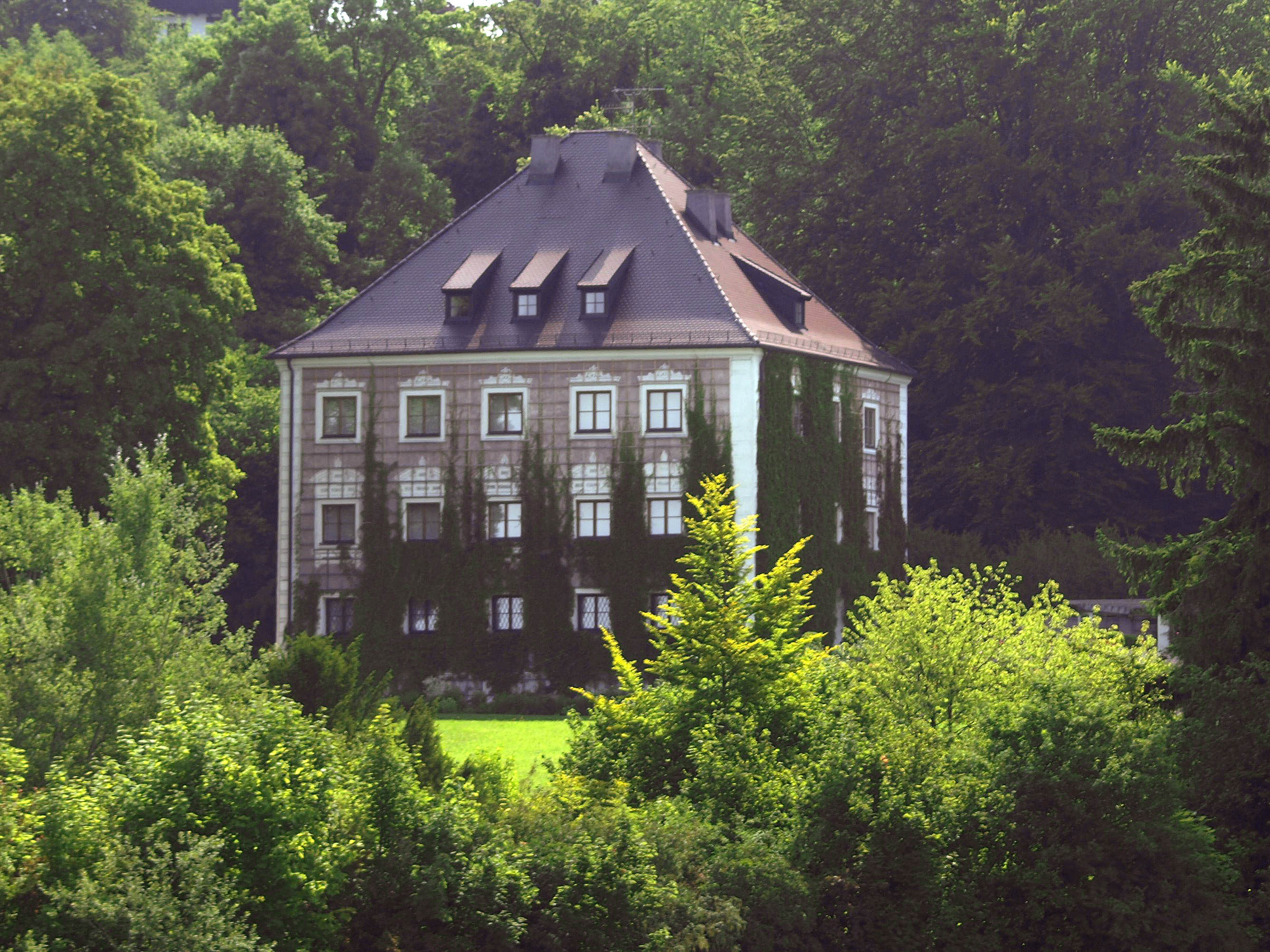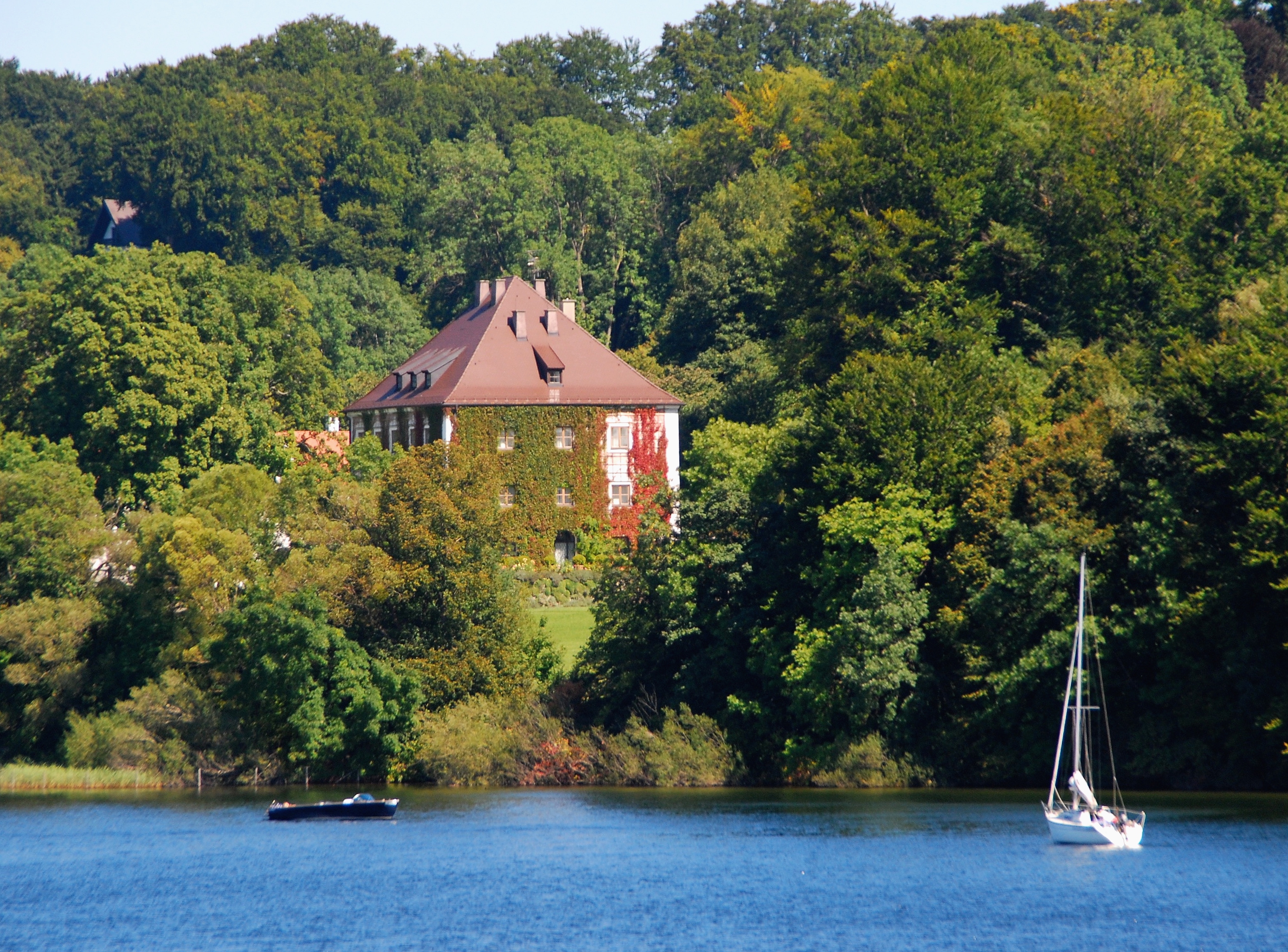Berg Castle (Bavaria) on:
[Wikipedia]
[Google]
[Amazon]
 Berg Palace (german: Schloss Berg) is a manor house situated on the east bank of
Berg Palace (german: Schloss Berg) is a manor house situated on the east bank of


History of Schloss Berg
Modern photographs of Schloss Berg
Royal residences in Bavaria Palaces in Bavaria Buildings and structures in Starnberg (district) Gothic Revival architecture in Germany {{Authority control
 Berg Palace (german: Schloss Berg) is a manor house situated on the east bank of
Berg Palace (german: Schloss Berg) is a manor house situated on the east bank of Lake Starnberg
Lake Starnberg, or ''Starnberger See'' ) — called Lake Würm, or ''Würmsee'' , until 1962 — is Germany's second-largest body of fresh water, having great depth, and fifth-largest lake by area. It and its surroundings lie in three different Ba ...
in the village of Berg Berg may refer to:
People
*Berg (surname), a surname (including a list of people with the name)
*Berg Ng (born 1960), Hong Kong actor
* Berg (footballer) (born 1989), Brazilian footballer
Former states
* Berg (state), county and duchy of the Hol ...
in Upper Bavaria
Upper Bavaria (german: Oberbayern, ; ) is one of the seven administrative districts of Bavaria, Germany.
Geography
Upper Bavaria is located in the southern portion of Bavaria, and is centered on the city of Munich, both state capital and seat o ...
, Germany
Germany,, officially the Federal Republic of Germany, is a country in Central Europe. It is the second most populous country in Europe after Russia, and the most populous member state of the European Union. Germany is situated betwe ...
. The site became widely known as the last residence of King Ludwig II of Bavaria
Ludwig II (Ludwig Otto Friedrich Wilhelm; 25 August 1845 – 13 June 1886) was King of Bavaria from 1864 until his death in 1886. He is sometimes called the Swan King or ('the Fairy Tale King'). He also held the titles of Count Palatine of the ...
and location of his disputed death. Today, it serves as residence of Franz, Duke of Bavaria, head of the house of Wittelsbach
The House of Wittelsbach () is a German dynasty, with branches that have ruled over territories including Bavaria, the Palatinate, Holland and Zeeland, Sweden (with Finland), Denmark, Norway, Hungary (with Romania), Bohemia, the Electorate ...
.
History


Ferdinand Maria, Elector of Bavaria
Ferdinand Maria (31 October 1636 – 26 May 1679) was a Wittelsbach ruler of Bavaria and an elector ('' Kurfürst'') of the Holy Roman Empire from 1651 to 1679.
Electoral Prince of Bavaria
He was born in Munich. He was the eldest son of Maximi ...
, acquired a piece of land on the banks of Lake Starnberg in 1676 from the Horwarth family and ordered the construction of Berg Palace. Ferdinand used it for festivities, but it reached its zenith under his successors, elector Max Emanuel and Emperor Charles VII, when it served as the ambiance for spectacular entertainment and hunting events.
Between 1849 and 1851 King Maximilian II instructed the architect Eduard Riedel Eduard Riedel (February 1, 1813 – August 24, 1885) was a German architect and Bavarian government building officer. Among other things he is known for his contribution to the construction of Neuschwanstein Castle.
Biography
Riedel was born in ...
to redesign the site in Neo-Gothic
Gothic Revival (also referred to as Victorian Gothic, neo-Gothic, or Gothick) is an architectural movement that began in the late 1740s in England. The movement gained momentum and expanded in the first half of the 19th century, as increasingly ...
style, with added crenellation
A battlement in defensive architecture, such as that of city walls or castles, comprises a parapet (i.e., a defensive low wall between chest-height and head-height), in which gaps or indentations, which are often rectangular, occur at interva ...
s and four towers, for which the king bought additional land. Maximilian's son Ludwig II of Bavaria
Ludwig II (Ludwig Otto Friedrich Wilhelm; 25 August 1845 – 13 June 1886) was King of Bavaria from 1864 until his death in 1886. He is sometimes called the Swan King or ('the Fairy Tale King'). He also held the titles of Count Palatine of the ...
had a fifth tower constructed, which he called ''Isolde''. In 1853 Maximilian had a small private harbour built.
Ludwig II used the site as his summer residence, moving here regularly every year on 11 May. For this purpose he established a telegraph line from Berg to the capital Munich
Munich ( ; german: München ; bar, Minga ) is the capital and most populous city of the German state of Bavaria. With a population of 1,558,395 inhabitants as of 31 July 2020, it is the third-largest city in Germany, after Berlin and Ha ...
.
In 1868 the Czarina of Russia Maria Alexandrovna visited Berg upon the King's invitation. Ludwig made it her residence for the duration of her visit and had it magnificently decorated for the occasion, as the site was otherwise rather modestly appointed by Ludwig's standards.
The surrounding park was fashioned and cultivated by his predecessors according to contemporary ideas of garden design
Garden design is the art and process of designing and creating plans for layout and planting of gardens and landscapes. Garden design may be done by the garden owner themselves, or by professionals of varying levels of experience and expertise. ...
, from a formal Baroque garden to an English landscape garden
The English landscape garden, also called English landscape park or simply the English garden (french: Jardin à l'anglaise, it, Giardino all'inglese, german: Englischer Landschaftsgarten, pt, Jardim inglês, es, Jardín inglés), is a sty ...
. Ludwig had the "Moorish Kiosk" set up here which Franz von Seitz
Franz von Seitz, born Franz Seitz (31 December 1817 – 13 April 1883) was a German painter, lithographer, engraver and costume designer as well as an art teacher and theatre director.
Life
Seitz was a native of Munich, Bavaria, son of Jo ...
had designed and built for the Winter Garden on the roof of the Munich Residenz.
In 1876 the King had a small chapel built.
On 12 June 1886, Ludwig, after he had just been declared mentally impaired and incapable of ruling and his uncle Luitpold having been appointed regent
A regent (from Latin : ruling, governing) is a person appointed to govern a state '' pro tempore'' (Latin: 'for the time being') because the monarch is a minor, absent, incapacitated or unable to discharge the powers and duties of the monarchy ...
, was transferred to Berg Palace. On June 13 he and his physician Bernhard von Gudden were found dead in the shallow waters at the banks of Lake Starnberg. The deaths remain contested, despite the official statement of drowning. A votive chapel and a memorial cross in the lake's shallows mark the site since.
After the king's death the house, still owned by the royal family, became a museum and in 1939 was declared a monument, as it had not been changed since Ludwig's death, and thus acquired not only a historical but also a cultural significance.
After World War II
World War II or the Second World War, often abbreviated as WWII or WW2, was a world war that lasted from 1939 to 1945. It involved the vast majority of the world's countries—including all of the great powers—forming two opposing ...
, the site was occupied by American soldiers, who damaged it severely, compounding previous damage caused by the war, especially to the corner towers, and further damage was caused due to burst water pipes. Little of the original furniture was preserved. It was completely renovated from 1949 to 1951, as the corner towers were entirely removed and the building was restored to its condition before Maximilian's intervention, although the chapel was not removed. Subsequently Albrecht, Duke of Bavaria
Albrecht, Duke of Bavaria (Albrecht Luitpold Ferdinand Michael; 3 May 1905 – 8 July 1996) was the son of the last crown prince of Bavaria, Rupprecht, and his first wife, Duchess Marie Gabrielle in Bavaria. He was the only child from that ...
, moved in and used it as his main residence until his death in 1996, upon which his eldest son Franz Franz may refer to:
People
* Franz (given name)
* Franz (surname)
Places
* Franz (crater), a lunar crater
* Franz, Ontario, a railway junction and unorganized town in Canada
* Franz Lake, in the state of Washington, United States – see ...
followed him as head of the House of Wittelsbach. However, Franz decided to officially live in Munich instead, where he occupies a wing of the Nymphenburg Palace
The Nymphenburg Palace (german: Schloss Nymphenburg, Palace of the Nymphs) is a Baroque palace situated in Munich's western district Neuhausen-Nymphenburg, in Bavaria, southern Germany. Combined with the adjacent Nymphenburg Palace Park it cons ...
and uses Berg Palace as his country retreat.
Notes and references
Sources
History of Schloss Berg
Modern photographs of Schloss Berg
Royal residences in Bavaria Palaces in Bavaria Buildings and structures in Starnberg (district) Gothic Revival architecture in Germany {{Authority control